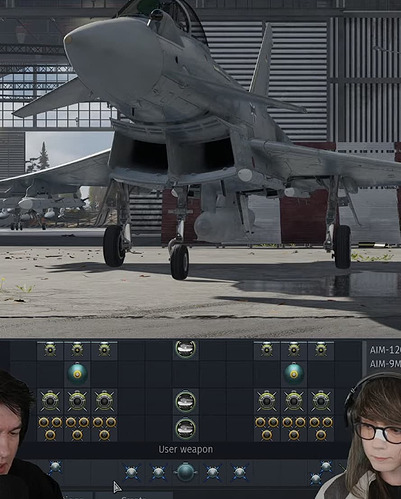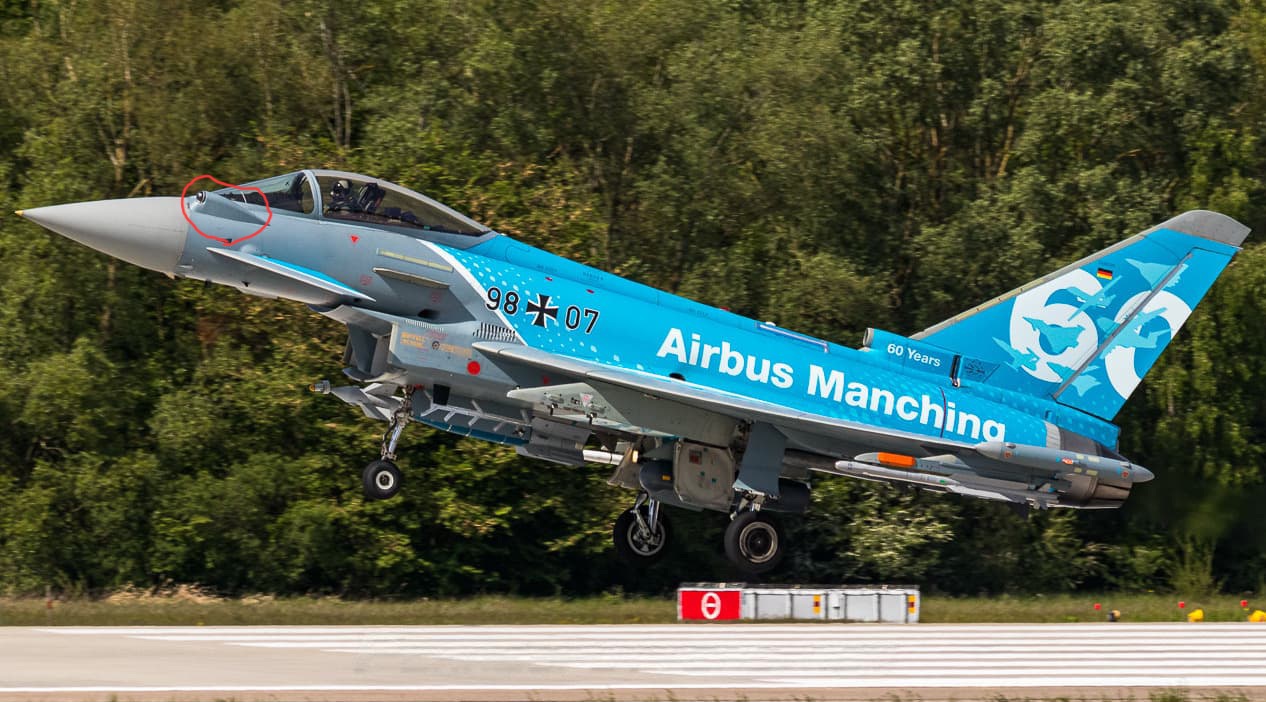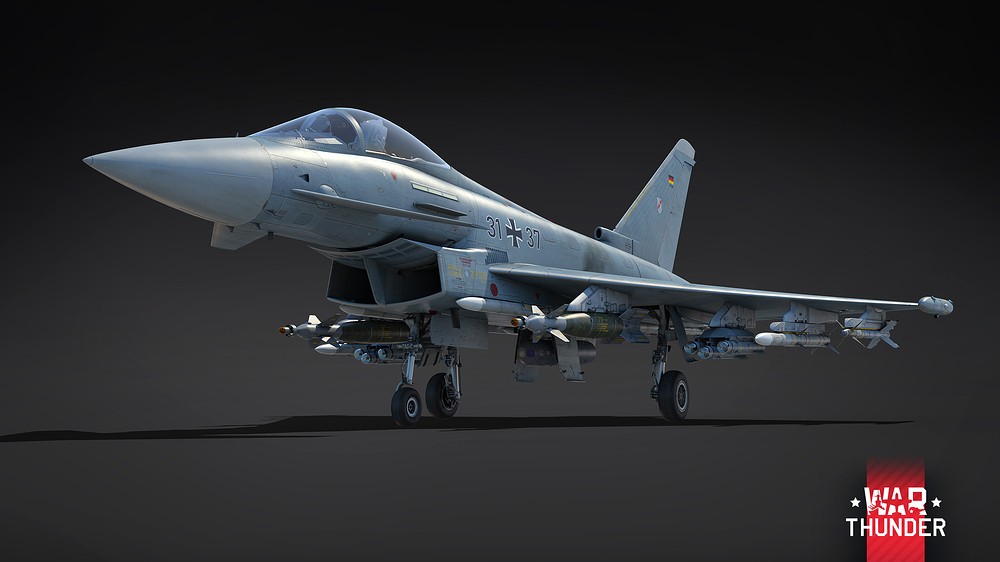- Yes
- No
Eurofighter Typhoon IPA7 - Sharpness Test of a Spearhead
Hi and welcome to my 87th, which is about the Eurofighter IPA7, hope you like it. ![]()
First of all:
- Feel free to share more Information and / or correct me if something is wrong
- Discuss respectfully, any aggressive kind or verbal abuse will be reported, the Forum rules also apply here

Background History
The development history of the Eurofighter is marked by political and technical complexity and dates back to the 1970s. The fighter aircraft was created against the backdrop of the growing threat from the Soviet Union during the Cold War, which prompted NATO countries to strengthen their air defense capabilities. Great Britain played a crucial role in the early development work, as the British military needed a highly maneuverable fighter aircraft for air superiority and at the same time wanted to promote the domestic aviation industry by developing a new, modern aircraft.
However, the challenge of multinational cooperation was already apparent in the design phase. Great Britain, Germany, Italy and France initially shared the goal of a new European fighter aircraft, but the countries’ priorities differed considerably. While Germany was primarily looking for a powerful air superiority aircraft, France opted for a multifunctional model that would also be optimized for ground operations. These different requirements soon led to conflicts, which ultimately led to France withdrawing from the project and developing its own fighter aircraft with the development of the Dassault Rafale. However, the remaining partners – the UK, Germany and Italy – decided to continue development and adapt the project to the specific requirements of their air forces. Spain later also joined the consortium and contributed significantly to the further development of the project.
The Eurofighter itself was developed with a strong focus on air combat maneuverability, high speed and agility. The design includes advanced aerodynamic features such as canards and delta wings that provide superior maneuverability, especially at supersonic speeds. Innovative technologies include the use of carbon fiber composites that reduce the weight of the aircraft and the use of thrust vectoring that gives the pilot additional control over the aircraft in extreme flight attitudes. The Eurofighter is also equipped with a state-of-the-art fly-by-wire system that makes the pilot’s control of the aircraft more precise and efficient.
However, the project was extremely challenging not only technologically but also financially and politically. Development and production costs continued to rise, leading to tensions and numerous negotiations between the partner states. The end of the Cold War also created uncertainty, as many European countries reduced their defense spending and the need for a new fighter aircraft was questioned. The project was repeatedly delayed and adjusted as the partner countries revised their requirements several times due to new threat analyses and budget constraints.
After extensive negotiations and several modifications to the original requirements, the partner countries finally agreed to produce the Eurofighter. The costs and labor shares were divided fairly, with companies such as British Aerospace (now BAE Systems), DASA (later part of Airbus), Alenia Aeronautica and CASA in Spain each taking on significant shares in development and production. This agreement enabled a fair distribution of economic benefits and ensured the continued existence of the European aviation industry at a competitive level.
The final production agreement of 1997 specified the orders for the partner countries and marked the start of series production. Great Britain, Germany, Italy and Spain committed to purchasing fixed numbers of Eurofighters, which gave the aircraft program the necessary economic stability. Today, the Eurofighter is considered one of the most modern combat aircraft in Europe and is used worldwide in various conflict scenarios and missions. Its development is an example of the challenges and opportunities of multinational cooperation in the defense sector and underlines the success of European cooperation, particularly in the field of military aviation technology.
On 16 January 2008, the IPA7 made its maiden flight, piloted by Chris Worning, as the first and only Eurofighter aircraft to fully Tranche 2 standard. In mid-2008, tests began with the 500-pound Paveway bomb, followed by experiments with the missile warning systems (MAW) over the North Sea. These tests were carried out in cooperation with F-4 Phantoms and Panavia Tornados of the German Air Force and continued into 2009.
Since the end of 2012, the IPA7 has been used for software tests, and from the end of 2013 also for tests with the Taurus cruise missile. On 15 January 2014, the first test flight with two KEPD 350 cruise missiles took place. In mid-2014, aerodynamic stability tests were undertaken with additional (AMK) strakes above the canards and enlarged rudders to improve the pitch-up moment and maneuverability.

Armament of the Eurofighter IPA7
The main armament is a Mauser BK-27 revolver cannon with 150 rounds. Since the IPA7 is an Instrumented Production Aircraft, there are a few additional armament options available. Various versions of the AIM-120 AMRAAM, as well as AIM-9, IRIS-T, ASRAAM and Meteor are used as air-to-air armament. The CAPTOR-D radar is the current radar of the IPA7, whereby CAPTOR-E Mk.0 or Mk.1 should not be a problem either, as well as the PIRATE IRST, which can only be found on the IPA’s in therms of German Eurofighters.
Various guided bombs are available for ground combat, StormShadow and Taurus cruise missiles, as well as Brimstone, L-JDAM and theoretically also AARGM.
Air-to-Air Missiles
- 4-6x AIM-9L/i
- 4-6x IRIS-T
- 4-6x ASRAAM
- 6x AIM-120B
- 6x AIM-120C-5
- 6x AIM-120C-7
- 6x AIM-120C-8
- 6x Meteor
Guided Bombs
- 6x GBU-48
- ?x GBU-54
Air-to-Surface Missiles
- 18x Brimstone II / III
- ?x AARGM
- ?x AARGM-ER
- 2x Taurus KEPD 350
- 2x Storm Shadow

Specifications, Electronics and Internal
- Crew: 1
- Length: 15,96 m
- Wingspan: 10,95 m
- Height: 5,28 m
- Max. takeoff weight: 23.500 kg
- Powerplant: 2x Eurojet EJ200
- Dry thrust: 2 × 60 kN
- Afterburner thrust: 2 × 90 kN
- Maximum speed: Mach 2.35
- Service ceiling: 16.765 m
- Rate of climb: 315 m/s
- Maximum g-load: +9g / -3g
Thanks for your time, hope you liked it ![]()
[Will add more if there are some (more) important / declassified things]
[PM or comment if a Link or Picture isn´t working]
Sources:
Links
https://www.eurofighter.com/
EJ200 - MTU Aero Engines
bundeswehr-journal Erfolgreicher Eurofighter-Testflug mit Taurus - bundeswehr-journal
Eurofighter testet aerodynamische Verbesserungen | FLUG REVUE
PHOTOS: Eurofighter Storm Shadow Trials at Manching – Military Aviation Review
AIRFIGHTERS.COM - Military Aircraft Photo Database and Aircraft Info
Praetorian Today | EuroDASS
Book / Other:
Eurofighter Typhoon & Dassault Rafale by Greg Goebel (2016)




